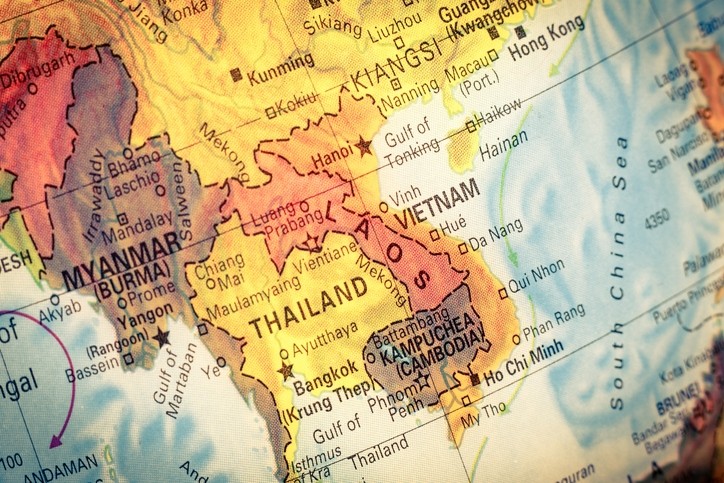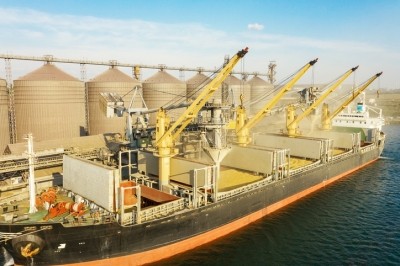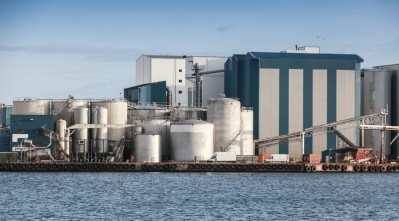Scoping exercise could drive change in South East Asian fisheries and fishmeal supply

Management of fisheries in the South East Asian (SEA) region has long attracted worldwide criticism for poor practices. Greater understanding of such fisheries is therefore vital, in order to bring about reform and an end to overfishing.
The Global Aquaculture Alliance (GAA) and IFFO, the Marine Ingredients Organization commissioned a report to generate insights into fisheries in SEA, back in July 2017. Consultant, Duncan Leadbitter, of Fish Matter Pty, compiled the study. As part of the work, he collated data for a period of about 10 months, relying on both publicly available information and in-country sources.
The highlights of the report can be read here:
Briefly summarizing the findings of the scoping exercise, Leadbitter told FeedNavigator:
“You don’t see big reduction fisheries in SEA like you do in Peru, for example. There is quite a different model, most of the catch goes towards human food, a lot of the raw material for fishmeal production comes from processing waste. The fisheries in both countries have not been well managed, even in Thailand… that is partly because managing such fisheries is different to [those in cold water regions that have a limited number of species], but also due to the fact there are capacity and third country development issues [in SEA]; however, that is changing rapidly.”
Some of the environmental challenges linked to fisheries in SEA is that they are mixed in nature, and are highly diverse in terms of species - very different to cold-water, single stock ecosystems. Such fisheries have proven challenging to manage for sustainability. In the past, many attempts were made to use techniques developed for single species fisheries, from cooler waters, but, in general, these have failed, said Leadbitter.
The management of such multi-species fisheries has to be done in a different way, he stressed.
He encourages both the GAA and the IFFO not to rubber stamp any models from outside, but to work with people on the ground to come up with something tailored to fisheries, and fishmeal production, in those regions. “It won’t be an easy pass, more an interactive learning experience.”
Data dive
Niel Auchterlonie, technical director, IFFO, told us:
“This is immense work, the first study of its kind. Duncan got into the field and spoke to people directly.”
The information in the report will allow both the IFFO and the GAA to identify areas for action, to drive change in those regions, he said.
“Duncan managed to get very good data on fishmeal production, particularly in Thailand, including the location of fishmeal plants, how much fishmeal is produced every year and some of the raw material coming into those plants. From a Vietnamese perspective, he noted how aquaculture by-product is being used for fishmeal production, and that is obviously a key area for growth in the future; as aquaculture grows there will be more of that by-product available.”
The key to driving change is collaboration, providing some kind of platform whereby the people who are interested in these regions can get together and agree a concerted approach about what should be done with individual fisheries and raw material supply, he stressed.
“We will use this piece of work to raise awareness of the issues – that is why it was commissioned in the first place. With that, we can hopefully influence some of the other international organizations like the FAO, WorldFish, some of the national governments in the region, and the whole food and feed supply chain, so that, in the future, we get to the point where we see fishery improvement projects (FIPs) on the ground in those regions.”
While there are already FIPs in place there, it is important to increase their number and improve the situation over time, he said.
The report’s findings
In Thailand, the development of the fisheries started in the 1960s and, in Vietnam, it was later on, in the 1980s.
The report focused on those two countries due to their importance in aquaculture production but also in fishmeal supply. Trawl and purse seine sectors dominate in both countries. Thailand has far more information available on its fisheries and aquaculture than Vietnam.
The aquaculture sector has been expanding over the past years in both countries, with the fishmeal sector also experiencing rapid growth as a result. Fish for fishmeal represent a small component of the catch in these regions, as fishermen are generally focused on providing fish for human food. However, there is a high level of efficiency in the fisheries, little of the catch is discarded or wasted, noted the study.
Tropical fisheries in SEA supplying raw material for aquaculture feed are primarily (80%) dedicated to catching for human consumption. The feed-fish is used for feed. The report shows fishmeal in SEA may originate from:
- Fish caught in domestic fisheries and used as whole fish – targeted or incidental catch,
- Fish caught outside territorial waters and used as whole fish,
- Imported wild or farmed whole fish that are processed, with the processing waste made into fishmeal,
- Locally produced wild or farmed whole fish that are processed, with the processing waste made into fishmeal,
- Fish that have exceeded their shelf life at local retail outlets.
Overfishing
The report shows overfishing in Thailand has been a problem for decades. A consequence of that excessive fishing pressure has been a major decline in larger fish and slower growing species, in favor of smaller, faster growing species. Initially this led to increased catches, but ongoing overfishing has led to an overall decline in the catch.
The study noted that, due to the complex nature of tropical multispecies trawl and purse seine fisheries, it can be difficult to put management regimes in place that can balance the interests of a diverse range of user groups and satisfy societal expectations for sustainable use and biodiversity protection.
However, in the past five years, the Thai government has made huge strides to reverse overfishing. It has cut the number of fishing boats, moved to rebuild stocks, increased mesh size in trawls, invested in vessel tracking systems and ensured far more rigorous enforcement of regulation, said Leadbitter in a webinar on the report.
Low quality fishmeal
The low value fish directed into the fishmeal supply chain would benefit from better handling and refrigerated storage, which would result in a higher quality fishmeal, found the report.
“Improving fish stocks and better handling of the fish will lead to better quality fishmeal,” said Leadbitter.
The facilities on board Thai vessels designed to handle fish for feed have typically been inadequate; the feed component was poorly treated by fishermen - they tended to consider it as thrash, so the handling issue was contributing to a lower quality feed ingredient, he said.
“There is also a link between the quality of fishmeal and overfishing as, due to reduced stocks, fishermen have to leave their nets in the water for longer in order to make a worthwhile catch, but the longer you leave the fish in warm water, the quicker it deteriorates.”
Poor quality fishmeal has undermined shrimp production, through reduced growth rates. So Thai shrimp farmers, requiring better quality feed, have been increasing the pressure for fishmeal quality improvements.
“You have now got plants in Thailand that have gone through the HACCP process. The next phase, I think, is that, once the fishery starts to recover from the recent management reforms, fishermen will have a bit more money in their pockets to upgrade their vessels and the handling equipment on board.
"I think we will be looking at a bit of a revolution over the next few years, more so in Thailand; Vietnam might take a bit longer.”
Collaboration
Leadbitter was keen to stress that the issues identified in relation to Thailand and Vietnam are not unique to those markets, nor to Asia.
“They are global issues. And we know from experience in other countries that collaboration between government and industry and other stakeholders can generate not only shared understanding of the issues but also shared ownership of the solutions.”
There has been a growing realization that overfishing is a problem for the whole supply chain, he said.
“What we have proposed in the report is that there are opportunities for the Thai and Vietnamese fishmeal sector to be a positive player, in terms of working with governments in those countries, and also industry stakeholders, to help transition towards responsible use.”








